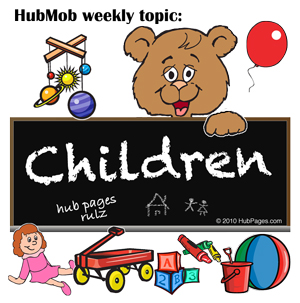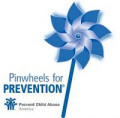What is Child Abuse, How to Spot It and Prevent It

This hub is a response to the HubMob Topic Protecting Our Children - a campaign to let people know that June is a month dedicated to child awareness issues. I chose the topic Child Abuse because a child of any age, sex, race, religion, and socioeconomic background can fall victim to child abuse therefore it is important that everyone should know about it and what one can do to help.
Do you know a child in your family, among your relatives, in your neighborhood, in school or immediate community who is/was a victim or is/was suspected to be a victim of child abuse?
Definition of Child Abuse
Many hubbers have already published hubs about What is Child Abuse. A list of some of them are on the right hand side. Just to give a summary:
Child Abuse is any recent act or failure to act by a parent or caretaker which results in harm, injury or death to a child. The four major categories of child abuse are child neglect, physical child abuse, emotional child abuse and sexual child abuse.
Child neglect is defined as the failure of a person responsible for a child’s care and upbringing to meet the basic needs of children including housing, clothing, food, education and access to medical care. It may include abandonment of the child.
Physical abuse is physical injury directed at a child by an adult. It involves acts like striking, slapping, whipping, excessive pinching, kicking, biting, burning, bruising, choking, shaking a child and many more. Spanking is subject to controversy as to whether it qualifies as physical abuse.
Emotional abuse is also known as verbal abuse, mental abuse or psychological maltreatment. It could include name-calling, ridicule, destruction of personal belongings, torture or bizarre punishment such as confinement in a closet or dark room or being tied to a chair, excessive criticism, inappropriate or excessive demands and withholding communication.
Child sexual abuse or CSA is inappropriate sexual behavior with a child by an adult or older adolescent. Forms of CSA include viewing or fondling a child’s genitals, making the child fondle the adult’s genitals, actual sexual contact against a child, or using a child to produce child pornography.
Would You Help to Stop Child Abuse?
What can we do to help stop child abuse?
I believe many are already aware about this issue. But the most important question to answer in this child abuse awareness is how can we help stop child abuse? How can we help innocent children from suffering the physical, emotional, mental and sexual pain that they don't deserve?
Child Abuse Prevention
April has been designated Child Abuse Prevention Month in the United States since 1983. One important thing to remember about child abuse is that it is a problem with solutions and it can be prevented. Often times, people get caught up in the drama propagated by media and fail to take the necessary action to resolve the issue.
Most often, the perpetrator of child abuse is someone the child knows, such as a parent, family friend or relative or the child caretaker. Child abuse usually happens in the child's own home, though it can happen anywhere. Therefore, prevention should start in the child's own home. Parents are called upon to be a nurturing parent taking necessary steps to ensure the safety and well-being of their children. Be aware of your child's caregiver's behaviors as well. Know who are the friends of your child in school, in the neighborhood or even online. It is important that parents teach their child to be aware of these dangers and teach them what to do to avoid becoming a victim.
There are cases when child abuse is caused by the parent himself/herself. Common causes of such include poverty, divorce, addiction, drug abuse, stress, limited education, job loss, and isolation. If we can help address these causes, then we can help prevent child abuse. There are prevention programs which work to help parents in this regard. One is Healthy Families America - a program launched in 1992 with the goal to
- systematically reach out to parents to offer resources and support
- cultivate the growth of nurturing, responsive, parent-child relationships
- promote healthy childhood growth and development and
- build the foundations for strong family functioning.
Communities are also called upon to respond to family crises and offer extra support to families when they need it, such as in times of illness, job loss, housing problems and other stressors. In these times of economic crisis, struggling families need help. Why not offer to baby-sit or run errands, or just lend a friendly ear. Give your used clothing, furniture and toys to other needy families to help relieve the stress of financial burdens that may cause some parents to take out on their kids. You can also volunteer to give your time and money to programs that support children and families like parent support groups or day care centers.
For more ideas to help prevent child abuse, visit Prevent Child Abuse America.
Summary of Basic Procedures in Reporting and Investigating Child Abuse and Neglect in Massachusetts
How to Spot Child Abuse and Report It
Every year, there are approximately 3 million suspected cases of child abuse that are reported in the US. There are some cases of child abuse that may never get reported. By knowing the warning signs of abuse, you can make a report if you believe a child's welfare is in danger.
Some of the physical and behavioral warning signs that a child has been abused are listed below. A child who shows these signs does not necessarily mean they are abused but these raise a red flag that something is wrong with them.
- They may seem nervous with adults or fearful of certain people.
- They may seem tired often or complain of bad dreams or not sleeping well.
- They children may not want to go home and will show up early and stay late at school and extracurricular activities.
- Some may show extreme behaviors, either very passive and withdrawn or aggressive and disruptive.
If you witness an abusive act against a child or even suspect that a child is being mistreated, don't hesitate to make a report. Reporting child abuse could save a life. Each State has a system to receive and respond to reports of possible child abuse and neglect. Professionals and concerned citizens can call statewide hotlines, local child protective services, or law enforcement agencies to share their concerns. For more information on reporting child abuse cases, visit Child Welfare dot gov.
Helpful Book for Emotional and Spiritual Healing and Recovery
Child Abuse Recovery
How I wish that after a child is removed from his abusive environment and rescued from his perpetrators, that his pain and suffering would also immediately go away. Sad to say, that is not the case. There are many ill consequences that the child must face with respect to his physical, psychological, behavioral and emotional life after the abusive experiences.
Some of the effects of child abuse that a victim might have to cope up with are: Alcohol and/or other drug abuse; anxiety; attention problems; bad dreams; behavior problems; compulsive sexual behaviors; depression; eating disorders; fear or shyness; learning problems; repeated self-injury; sexual dysfunction; social withdrawal; and suicide attempts.
Some physical wounds would heal but the pain and the broken spirit takes a longer recovery process. Counseling therapy helps in either individual or support group setting. Friends and family can help the child abuse victim feel loved and accepted again.
Freedom from fear, addiction, anxiety, depression and finding real joy again can only be found in God alone. As Psalm 34:17 says "The Lord is close to the brokenhearted and saves those who are crushed in spirit." Celebrate Recovery is one Christ-centered, Biblically-based program for
individuals and their families who struggle with emotional distress and
addictive issues. Many have found new meaning in their life again after going through this program.









